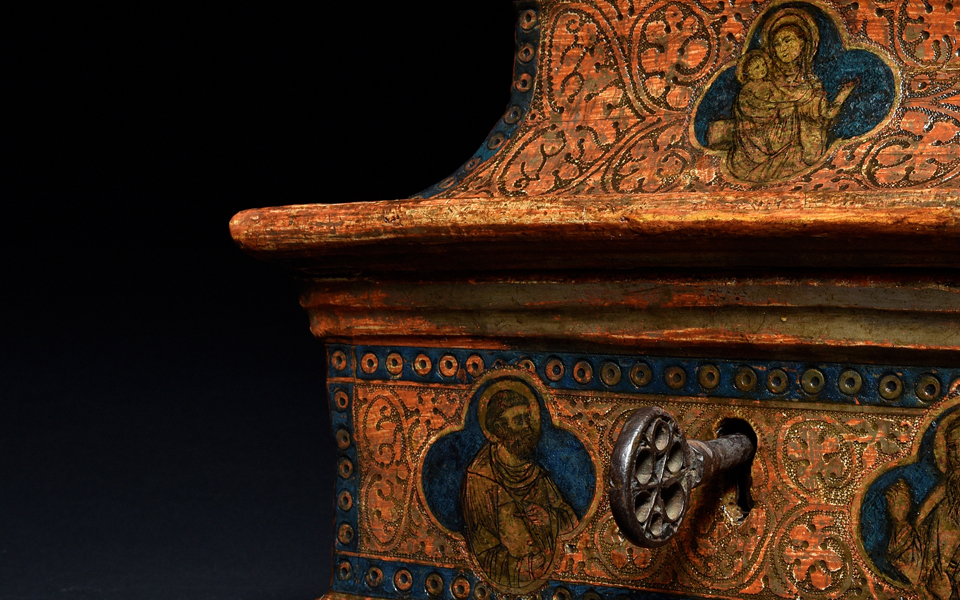
Painting and goldworking in conversation. A Rare Fourteenth Century Sienese Casket
With the catalogue “Painting and goldworking in conversation. A Rare Fourteenth Century Sienese Casket“, the Alessandro Cesati gallery continued in 2019 a series of publications intended to significantly document important works of art, this time focusing on an extraordinary mid-fourteenth-century Sienese casket.
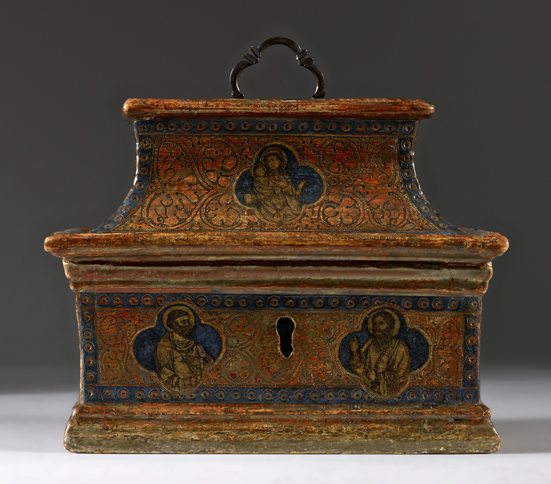
The great importance of the piece led to the publication of a special book, enriched by the contributions of Professor Andrea De Marchi and Dr. Chiara Guerzi. The volume is the result of a thorough investigation and perfectly illustrates the rarity of this casket for small and precious objects: it is in fact the oldest specimen among the so-called ‘pagoda-shape’ caskets. Moreover, research has led to attribute the piece to a Sienese artist certainly in the circle of Lippo Vanni, and stylistically very close to Pietro and Ambrogio Lorenzetti.
The catalogue illustrates an artifact of the highest value and of great cultural importance belonging to a category of both profane and religious objects. With a series of precise and widely illustrated comparisons, this edition is an important reference point for collectors, art historians and lovers of antiques.
“A small box, ostensibly a simple object but actually anything but banal. The imitation using painting techniques of a product of goldsmithery, almost unique of its kind, encapsulates many features of 14th-century artistic culture, particularly in a city like Siena, which succeeded in combining a tireless quest for refinement with an exploitation of the illusory potential of the new art (…).We should thus ask ourselves about the function of this sort of goffanuccio, comparable in shape to others with a purely secular purpose, used to store jewellery and women’s valuables. We know of some little boxes of between the 13th and 14th centuries that seem to have served as reliquary cases (…).It is tempting to imagine that our casket too was used by an important member of the church to store his own small personal effects. In Siena, in around the mid-14th century”.
(Extract from the Preface by Andrea De Marchi, Professor of History of Medieval Art at University of Florence).
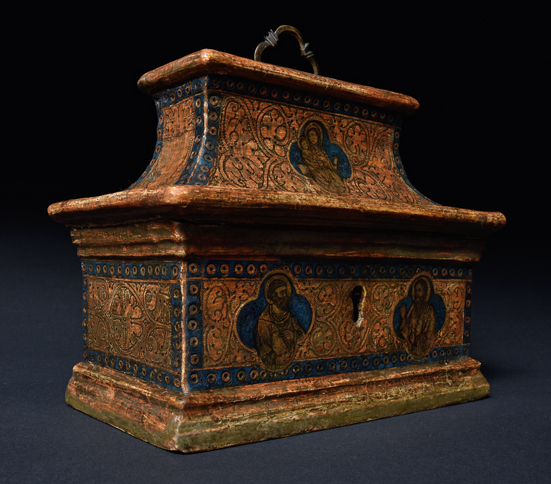
“The figures within medallions were once set against a light blue ground; they were painted on the gold in imitation of the exquisite effects of gold-working techniques such as enamels, niellos or verres églomisés, As a result, the overall effect is that of rapidly executed monochrome drawings (…). The figures are rendered with a witty and amusing verve, but above all indicate a desire for characterization and a gravitas reminiscent of the works executed by the followers of the Lorenzetti brothers. Well known is the role played by Pietro Lorenzetti in the stylistic evolution of Niccolò di Segna, with whom he collaborated in the Spinelli chapel in Santa Maria dei Servi in Siena and thanks to which he succeeded in consolidating the construction of the figures”.
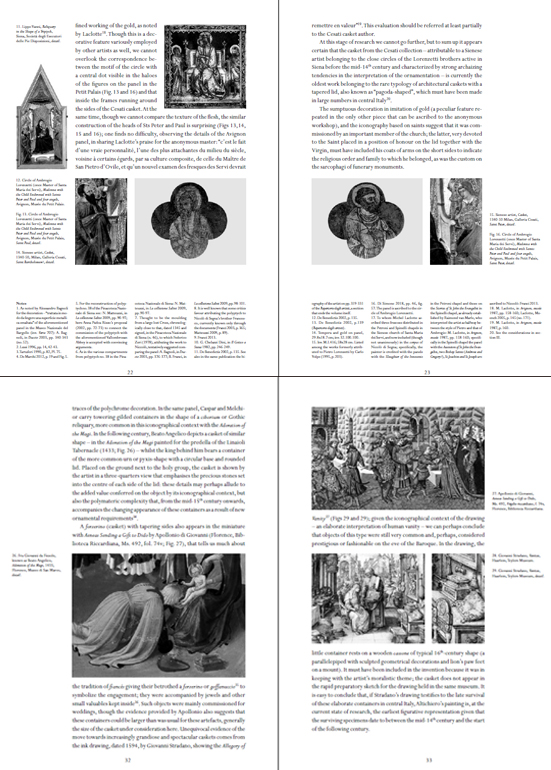
“Despite this, the medallions on the Cesati casket find closer parallels both with the still enigmatic master belonging to the close circles of the Lorenzetti brothers and formerly known as the Master of Santa Maria dei Servi, in between the style of Pietro and that of Ambrogio, and on the other, as suggested to me by Andrea De Marchi, the works executed by the versatile and better known workshop of Lippo Vanni (documented 1340 to 1375).
The architectural form of the Cesati casket has led to works of this specific shape being described as belonging to the “Pagodentypus” or “cofanetto a pagoda” type for their tall lid with tapering sides. This type began to spread during the 14th century alongside the more traditional trapezoid or pyramid-shaped lids in vogue for such objects since antiquity”.
(Extract from the essay by Dr. Chiara Guerzi)
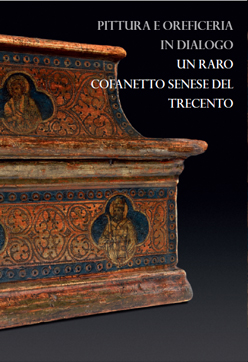
Chiara Guerzi, PAINTING AND GOLDWORKING IN CONVERSATION. A rare fourteenth century Sienese Casket
Cesati&Cesati, Milan 2019
Limited and numbered edition of 500 numbered copies
Cm 18 x 25,5
Stitiched binding
Bilingual text italian/english
ISBN 978-88-90276-23-1
Essay by Chiara Guerzi
Introduction by Andrea De Marchi
Translation Erika Milburn
Design Studio Cree
Photos Manusardi S.r.L – Art Photo Studio
Out of Stock
© 2013 – 2023 cesatiecesati.com | Please do not reproduce without our expressed written consent
Alessandro Cesati, Via San Giovanni sul Muro, 3 – 20121 Milano – P.IVA: IT06833070151